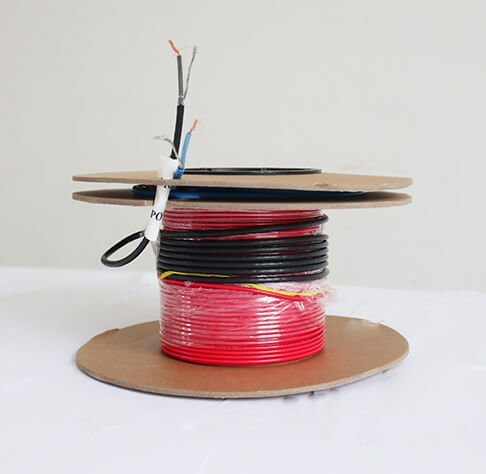Heating cable is a device that works on the principle of resistance heating and is widely used in many fields. It mainly generates heat to heat and insulate pipes, sinks and other equipment to prevent freezing and maintain constant temperature.
Heating cables work by using electric current to pass through a resistive wire to generate heat. Resistance wire is usually made of high temperature resistant materials and has high resistivity. When current passes through a resistor wire, heat is generated by the resistor wire according to Ohm's law. This heat is transferred to objects that need to be heated, such as pipes, sinks, etc., through thermal conduction, thereby achieving the effects of heating and heat preservation.
Heating cables are widely used in many fields. Here are some common application scenarios:
Industrial pipeline antifreeze: In cold environments, industrial pipelines are prone to freezing, causing pipeline rupture and production interruption. Heating cables can be installed on the pipe surface to prevent the pipes from freezing by heating them.
Tank insulation: In places where the temperature of the liquid in the tank needs to be kept constant, such as laboratories, industrial facilities, etc., heating cables can be used to insulate the tank to ensure that the liquid is not affected by the external temperature.
Greenhouse agriculture: In winter or cold areas, crops in greenhouses need to be maintained at a certain temperature to promote growth. Heating cables can be installed in the soil to provide a constant temperature environment through heating, thus improving crop growing conditions.
Floor heating: Heating cables can be installed under the floor to heat the room by heating the floor. This method can provide even and comfortable floor heating effect, which is especially suitable for use in cold areas and winter.
When installing and using heating cables, you need to pay attention to the following:
Insulation: Make sure the heating cable has good insulation properties to avoid leakage and safety hazards.
Temperature control: According to actual needs, appropriate temperature control equipment is equipped to ensure that the heating cable works at the predetermined temperature.
Installation location: According to the specific application scenario, choose the installation location reasonably to ensure that the heating tape can effectively cover the area that needs to be heated.
When choosing the right heating cable, you need to consider the following factors:
Power: Select the appropriate power according to the object to be heated and the ambient temperature to ensure that the heating effect meets the requirements.
Length: Determine the required length of heating cable according to actual needs to ensure coverage of the area that needs to be heated.
Durability: Consider the durability and longevity of your heating cable and choose a product that is reliable and long-lasting.
Regular inspection and maintenance of heating cables is key to ensuring their proper operation and safe performance. Regularly check whether the cable connection is firm and the insulation is in good condition, and perform regular functional tests to ensure the normal operation of the heating cable.
To sum up, heating cables are widely used in industry, agriculture, homes and other fields. Correct selection, installation and maintenance of heating cables can provide effective heating and insulation solutions to meet the needs of different areas.


